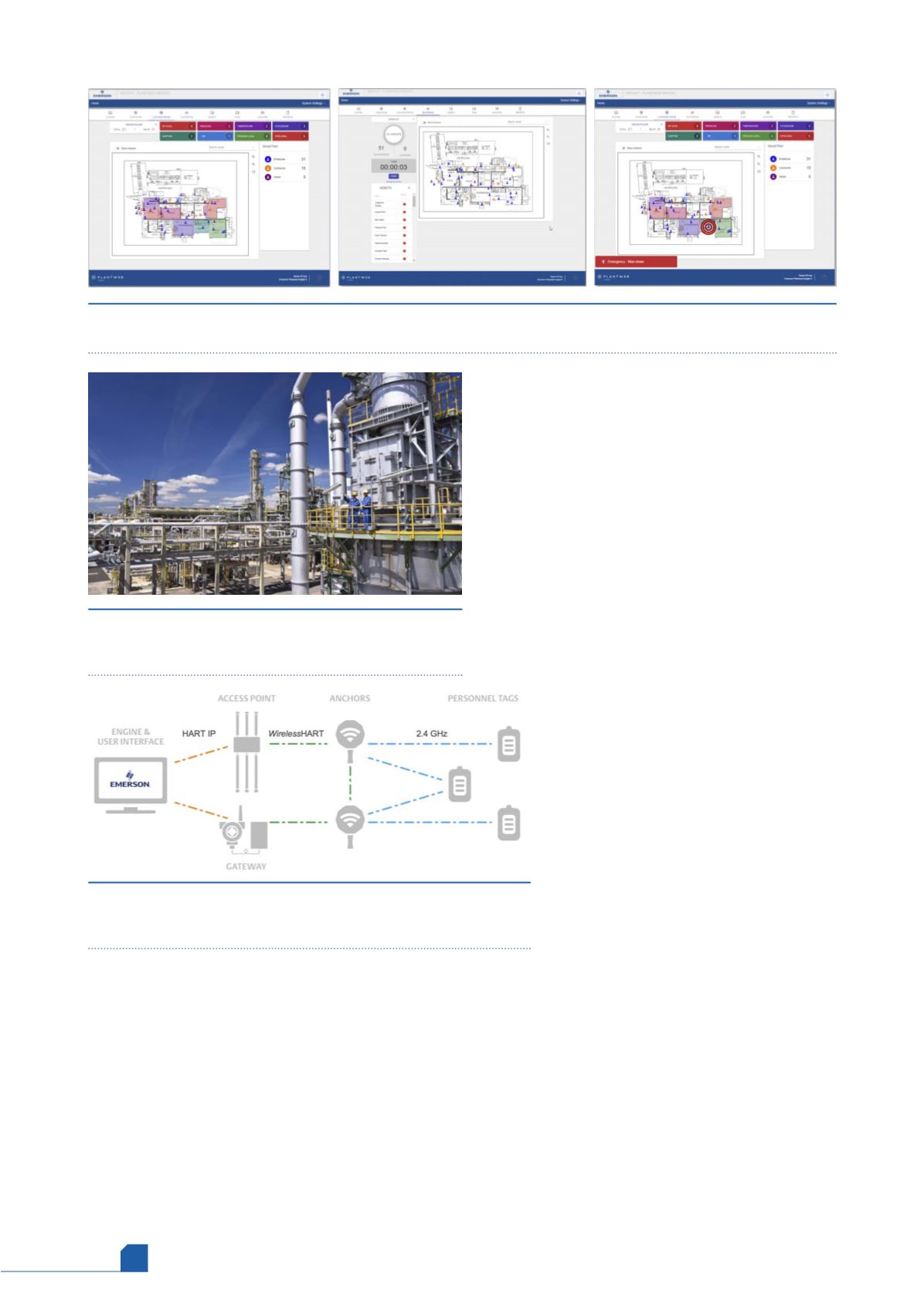
July
2020
HYDROCARBON
ENGINEERING
60
information freely. These improvements have been facilitated by
new networking technologies, especially the internet and
wireless networks.
The one area that has been reluctant to join the integration
transition is safety. Plant operators and organisations responsible
for writing standards have leaned towards keeping safety
systems minimally integrated, if at all, and far more basic in
functionality. Simplicity is thought to equal reliability, and in
many contexts, this is a good idea, as one wants the
pressure-relief system on a reactor filled with toxic product to
do its job every time.
However, every situation does not call for the highest
degree of separation and isolation, and in many instances,
integration creates a safer system. Moreover, it is possible to
capture data from safety systems without interfering with their
critical functions. This article will look at two examples of
where safety-related functions can be extended and integrated
to improve safety.
Personnel location systems
Plant managers have long wanted a mechanism to determine
who is in the plant and where each individual is at any given
moment. If there is a safety incident, it is important to know
which people might still be in harm’s way, or if they have
moved to safe areas. Implementing this type of system has
seen many barriers due to cost, design, and installation
investments required.
Location systems indicating where people are in
relevant-time serve three main functions (Figure 1):
Geofencing indicates whether an individual
has moved into an area where he or she does
not belong due to hazardous conditions,
inadequate training, or other issues.
Safety mustering lets first responders know
that people in the plant have moved to the
correct safe areas during a drill or actual
incident. If they are not in a safe area, the
system will alert users to their location.
Safety alerting allows a worker who is injured
to push a button on his or her wearable
location tag pendant to indicate an
emergency in progress and show responders
where to find the person.
These types of systems are not necessarily
new, but making them practical to install in an industrial
environment has been a challenge since no fully wireless
solution has been available. For example, knowing that a
worker is somewhere in Unit 2 might be adequate in some
cases. In other cases, responders may want to know if the
person is next to Surge Tank B. Process plants exist in three
dimensions (Figure 2) so height can often be a major factor,
which means receivers need to be placed at various levels.
Improving location resolution usually requires adding
Wi-Fi routers in more locations, but this is an expensive
proposition since industrial routers are costly, especially those
rated for hazardous areas, and must be hard-wired for power,
raising the installation cost substantially. Fortunately, there are
lower-cost options that are just as effective.
Figure 2.
Refineries and general process plants often
have many levels, so location systems have to consider
height.
Figure 3.
Individual personnel tags communicate with the anchors,
which in turn communicate with the WirelessHART gateways and
access points.
Figure 1.
Software designed to support location system functions can include pre-designed user graphics,
including geofencing (left), safety mustering (middle), and safety alerts (right).








